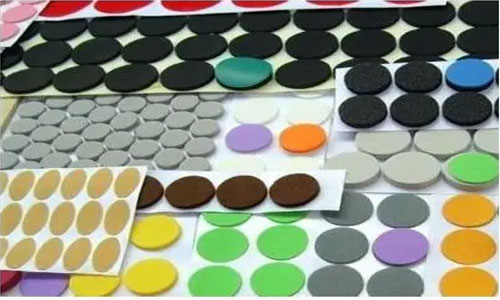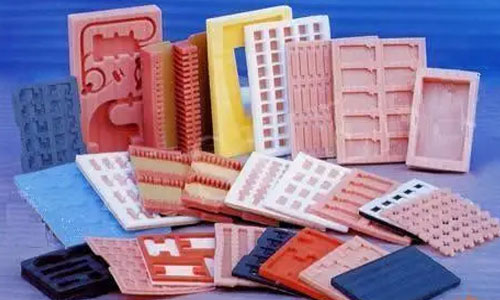Die cutting techniques can also be applied to materials like neoprene, film, and vinyl. Here are some specific techniques and applications for these materials:

1. Neoprene die cutting: Neoprene is a flexible and durable material commonly used for applications requiring water resistance, insulation, and cushioning. Die cutting can be used to cut neoprene into various shapes and sizes. Some common applications of neoprene die cutting include gaskets, seals, protective covers, and sporting goods such as wetsuits and knee pads.
2. Film die cutting: Films made of materials like polyester, polypropylene, or PVC can be die cut to create precise and intricate shapes. Film die cutting is widely used in the production of labels, decals, nameplates, and electronic components. It allows for high-quality printing, adhesive application, and custom designs.
3. Vinyl die cutting: Vinyl is a versatile material that can be die cut to create shapes, letters, and designs. Vinyl die cutting is commonly used in the production of signage, vehicle graphics, window decals, and stickers. It allows for easy application and removal, making it a popular choice for promotional and branding purposes.
4. Upholstery and foam die cutting: Die cutting can also be used to cut upholstery fabrics and foam materials. This technique is commonly used in the furniture, automotive, and aerospace industries to create custom shapes and sizes for seat covers, cushions, and padding. Upholstery and foam die cutting ensure precision and consistency in the production process.
5. Precision die cutting: Precision die cutting techniques can be applied to materials like neoprene, film, and vinyl to create intricate and complex designs. Laser die cutting, for example, uses a laser beam to cut through the material with high precision and accuracy. This technique is suitable for applications that require fine details, sharp corners, and clean edges.

Die cutting techniques offer numerous advantages when working with neoprene, film, and vinyl materials. They allow for efficient and accurate production, customization, and versatility in design. Whether it's for industrial, commercial, or personal use, die cutting can help create high-quality products with these materials.
Here are the topics that we’ll cover in this complete guide Rotary Die Cutting in Industrial Applications Section 2: Categories of Materials in Die Cutting:
2.1 Plastics: Types, Applications, and Die Cutting Considerations
2.2 Non-Metallic Materials: Characteristics and Die Cutting Applications
2.3 Medical Supplies: Die Cutting Challenges and Solutions
2.4 Paper Products: Die Cutting Techniques and Applications
2.6 Automotive Components: Die Cutting Solutions for Efficient Production
2.7 Electronics: Die Cutting for Precision and Performance
2.8 Non-Wovens: Die Cutting Techniques for Enhanced Efficiency
2.9 Chipboard, Foil, and Corrugated Materials: Die Cutting Considerations
2.10 Fishpaper, Thermal, and Fiberglass: Die Cutting Techniques and Applications
2.11 Digital Substrates: Die Cutting for Advanced Printing Technologies
Contact: Pamela
Phone: +86 189 6365 3253
E-mail: info@industryprocess.com
Whatsapp:+86 189 6365 3253
Add: Yajing Industrial Park, No. 59 Shuangjing Street, Weiting Town, Suzhou Industrial Park
We chat
